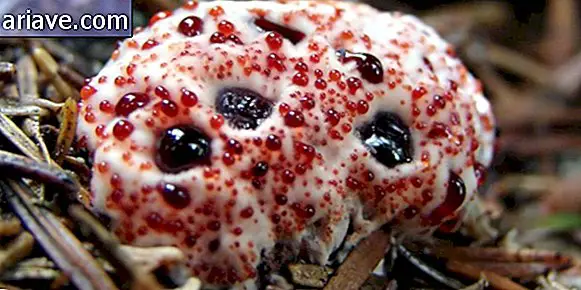Next Stop: Uruguay - The Magnitudes of the 2nd Smallest Country in Latin America
For some months Mega Curioso has been bringing you some interesting curiosities about different countries. Today's Next Parade will talk about one of our neighbors: Uruguay, the second smallest country in South America, famous for its cattle and sheep breeding. Due to the large green area and the colder winter climate, the country is also called “Switzerland of South America”. The nickname also has to do with stable democracy and some social benefits, such as quality public education.
Historically speaking, it is worth remembering that Uruguay was colonized by the Spanish and Montevideo was “founded” in 1726. At first the city was a military base, but later became an important commercial center. Attached to Brazil for a long time, Uruguay declared itself independent in 1828 after three years of fighting.
The twentieth century was marked by political, social and economic reforms, and the country faced a violent period when the government ceded control of the nation to the military in 1973. The years of military oppression continued until 1985, but the country was only left. de facto free of such control in 2004, when the Broad Front, a center-left electoral coalition, won the national elections.
The country of Mujica

The small country of just three million inhabitants has Spanish as its official language and borders Brazil and Argentina. There, the life expectancy is 76 years. The official currency is the Uruguayan peso, and the current president of the country is a nice gentleman who walks around, lives in a small place, lives humbly, and has clever ideas and ideals. In case you don't know yet, we are talking about the popular José Mujica, or Pepe Mujica, for the intimates.
“Republics did not come into the world to establish new courts, republics were born to say that we are all the same. And among the equals are the rulers. No one is more than anyone, starting with the ruler, ”once said the politician who became a symbol of true democracy. Mujica also made history by making it legal in her country to use marijuana and same-sex marriage.
About the controversial legalization of marijuana, he explains: “We want to get the market out of drug trafficking, we want to get them out of their economic motive, we want drug trafficking to have a strong competitor and not be the market monopolist. At the same time, we try to incite people to act medically. ”
Other names

But it is not only controversial that a Uruguay is made, no. The neighbors' land is also the land of great writers such as Mario Benedetti, who has produced works in various genres, including short story, poetry, essay, novel and drama. La Tregua, published in 1960, is one of Benedetti's greatest hits, alongside 1963's “Inventory Uno” with his poetic experiences.
It is also necessary to mention the name of Juan Carlos Onetti, considered by many the best Uruguayan writer and one of the best narrators of the Castilian language. Among his works, we highlight “Let us have hablar al viento” and his compilations, such as “Cuentos, articles y miscelánea”.
And of course, if you know a little about Uruguayan writers, you must imagine that Eduardo Galeano could never be left out. One of the most influential Latin American writers, Galeano explores historical and political issues in his works, always seeking to revive the memory of our continent. A more than recommended reading is “Las Venas Abiertas from Latin America”.
More culture

Once you are in the land of Galeano, Onetti and Benedetti, be sure to try the culinary delights of the Uruguayan lands. One of them, if you are very hungry, is the chivito al pan, which is nothing more than a monstrous sandwich stuffed with everything you can imagine and, of course, with steaks of the famous Uruguayan meat. As if that were not enough, the dish comes with a robust portion of chips. After stuffing, eating a mate is almost a must, don't forget!
Culturally speaking, there is much to be done in Uruguayan lands, after all, people there are passionate about dance and theater. The origins of the Uruguayan people may even be European, but the particularities of those who live there have guaranteed those lands an admirable uniqueness.
If you think that going to Uruguay is the same as going to the interior of Spain, you are very, very mistaken. No place is the same as Uruguay. And Uruguay is no copy anywhere. As culture and sport go hand in hand, it is worth talking about the passion for football and sports such as rugby, basketball and horse racing.
More of the same

As for the country's flag, you may have noticed that it has nine white and blue stripes, with a sun on the upper left side, right? The nine stripes represent the regions that divide the country politically. The Sun with its 16 rays is the representation of the freedom of the country of mate.
Once you are visiting the Uruguayan beauties, it is important that you do not get “stuck” with Montevideo or Punta Del Leste, just. There are other equally charming places to visit, especially if you're the type who prefers to get away from the crowds of tourists by taking photos tirelessly.
A place called Cape Polonium is highly recommended for those seeking a more Zen time, almost 100% away from civilization. There is no running water or electric light there, but the few locals will ensure that your passage there is delightful.
In Cabo Polonio you will find tourists who like contact with nature, who are not looking for luxurious accommodation and who enjoy spending the day watching the sea and listening to someone play the guitar. The place has a bar, without electricity, all lit with kerosene lamps. If you would like to watch a documentary about the charming Cape Polonium, click here.
Hosting and stuff

When booking your stay, be aware of the hostels - or hostels - available throughout the country. These establishments offer affordable shared rooms. You can spend from $ 33 to $ 1, 467 per night on the different types of stays available there. Here is a list of the best places to stay in Uruguay.
A few more curiosities
- If you mistreat a dog on Uruguayan lands, you will be fined;
- The country was "discovered" in 1516;
- The four seasons are well defined there;
- Almost 90% of the Uruguayan population is of European descent;
- Uruguay was champion of the first World Cup held in Brazil;
- Carnival in the country lasts 40 days;
- Uruguay is the 37th happiest country in the world;
- The country occupies the 33rd position in the ranking of the most peaceful in the world;
- It is also the 9th cleanest and greenest place on the planet
- Many Uruguayan houses have names.

There are many Brazilians living in the neighboring country, whether to work, travel, study or do all at the same time. The Viver Uruguai blog features portraits of a Brazilian who lives there. She gives very useful tips to anyone who wants to go to the country ruled by Mujica. From what to carry in the suitcase to reports of Brazilians living there, advice for job seekers, culinary indications and so on. Highly recommended.











